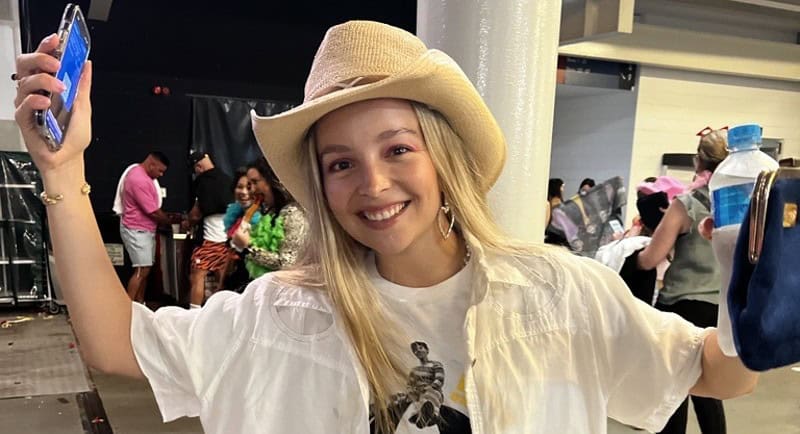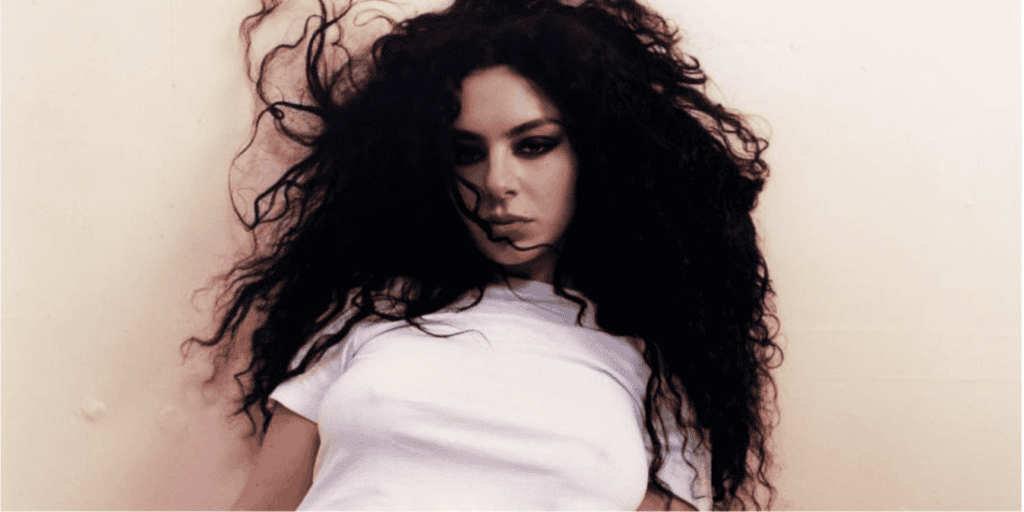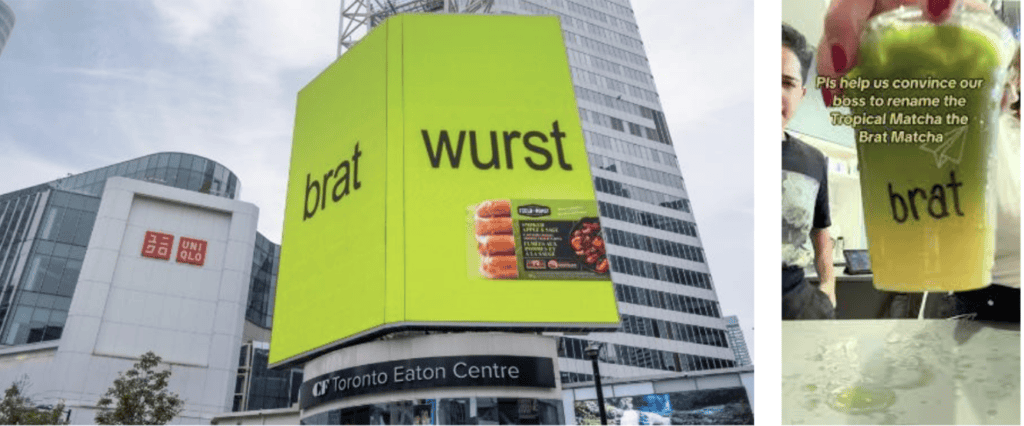‘Obsessed’ is a monthly deep dive into social and cultural trends that can help marketers inform the way they think. Led by Kate O’Loughlin, Initiative strategist and self-confessed obsessive, ‘Obsessed’ will be a magic school bus to expand marketing mindsets and help brands remain relevant amongst an ever-changing cultural landscape.
This month I’ve been obsessed with… the brat album release campaign from Charli XCX.
The album release was the perfect example of the power of a distinctive media device in delivering disproportionate word of mouth for any brand.
If you haven’t been bombarded by the Apple dance on TikTok or have somehow missed the slew of female internet baddies in the ‘360’ video clip, then let me catch you up.

Kate O’Loughlin

Charli XCX (Charlotte Emma Aitchison)
Charli, known for iconic 2010s pop song I Love It and Boys, had been out of the top ten charts for the last decade until her feature on the Barbie movie soundtrack with Speed Drive. While XCX had pop-star level fame early in her career, since 2012 she had only had fleeting moments of true mainstream success and was better known as a loud, grungy, tech-forward artist with a cult following.
But on the 7th of June 2024, Charli XCX dropped her latest, acid-green coloured rave-centered album and life has simply not been the same since. The album debuted at number three in the United States and has earned her highest opening-week sales in the United Kingdom. Sales aside, brat has solidified itself in culture through the trending terminology that it is now officially a Brat Summer… or winter, in the case of the southern hemisphere.

The music itself is incredible and deserving of every accolade, but there is more to the success of brat than XCX’s thumping base and emotionally charged lyrics. The design of the album cover has brought in an audience (mainstream music fans) who otherwise may have overlooked XCX, making the cover art her own personal distinctive media device. This is for two key reasons:
• The nuclear green, almost-cringey colour of the album has acted as a hook for content generation and discovery.
• brat as a name meant there is a clear vibe to the album that you can latch onto without even listening to the music: rebellious, punk, and the total opposite to the recently popular trend of #cleangirl aesthetic.
This distinctive media device has propelled its way into culture through a multitude of ways, but central to its success has been a clear paid, owned, earned and shared strategy that makes it seem as if XCX herself is a media professional…
• Paid: A series of ‘brat walls’ popped up internationally, where (you guessed it) the green album art was literally just painted to a wall. The distinctive colour and replicability of the image meant that fans were instantly able to recognise the imagery and seek out the wall in their own market.

• Owned: Other than the album itself, XCX and her team leant into the meme-ification of the album art by launching a ‘brat generator’, where users could input any text of their choosing to be brat-ified into album art.
• Earned: Brands were quick to jump onto the trend, and in doing so gave brat even more free airtime. From small social activations to full scale billboards, its kryptonite green has been plastered across brand comms since its inception.

• Shared: Pre-album launch, XCX dropped her first ever Boiler Room set. Choosing to align to a property so entrenched in club culture was the perfect partner to launch the ‘brat’ ethos into market.
Aside from the core green concept, XCX has taken the device as a long-term play and used the same blurry font style for the launch of the extended edition of the album titled brat and it’s the same but there’s three more songs so it’s not.
So, how do we apply the ‘brat’ approach to marketing? To me, there are three key points to consider:
1. Minimalism: The simplicity of the album art made it easily replicable, and customers could involve themselves in the discourse through a powerpoint (or the ‘brat generator’). Brands looking for a device to replicate should make it clear and easy for all audiences to engage with.
2. OESP: Consider how the device can bleed through all layers of an owned, eared, shared and paid plans. Identify ways for not only customers, but other brands, to be involved.
3. Tone: brat isn’t just an image, there’s a message behind the album – that we should all just embrace being a little bit feral at times, rejecting the #cleangirl culture that was so rife in 2023. Brands looking to launch a distinctive device must consider the environments and contexts within which it shows up to ensure the tone of the brand is clearly communicated.
To sum up: the distinctive device branding and following OESP campaign for brat has meant that #bratgirlsummer has transcended customers and affirmed its place as one of the most epic launches of the year – even if gritty club music isn’t your vibe, the brat narrative is one worth following.
See also: Food has become a status symbol for quiet luxury brands
–
Top Image: Kate O’Loughlin
